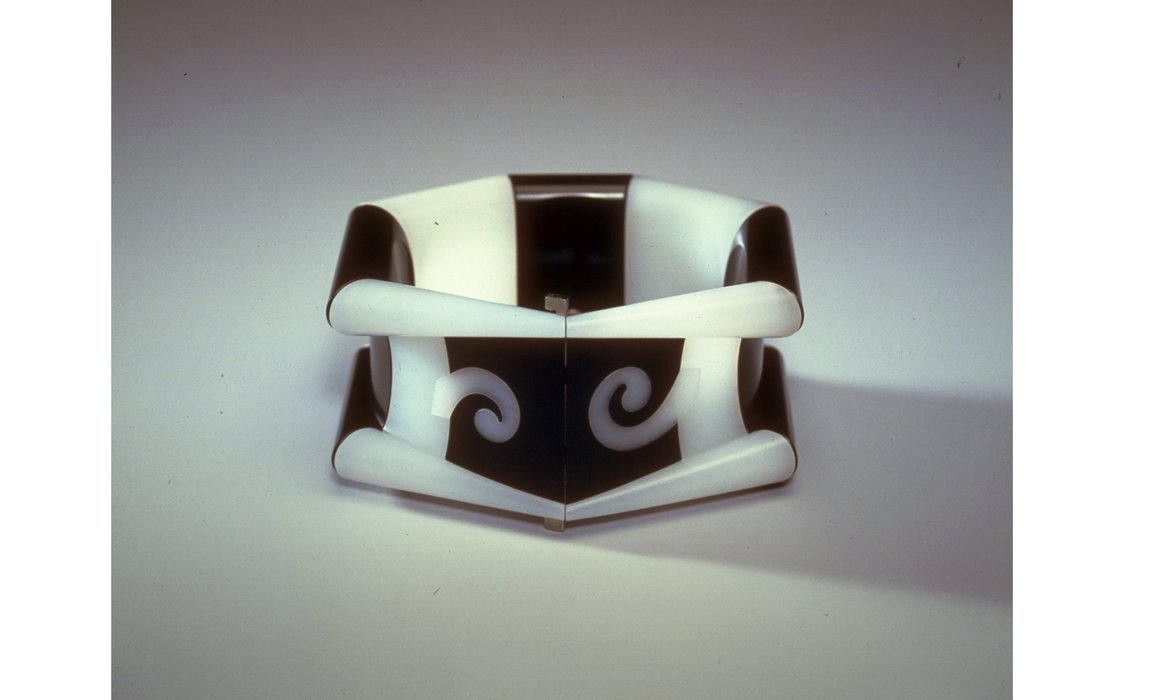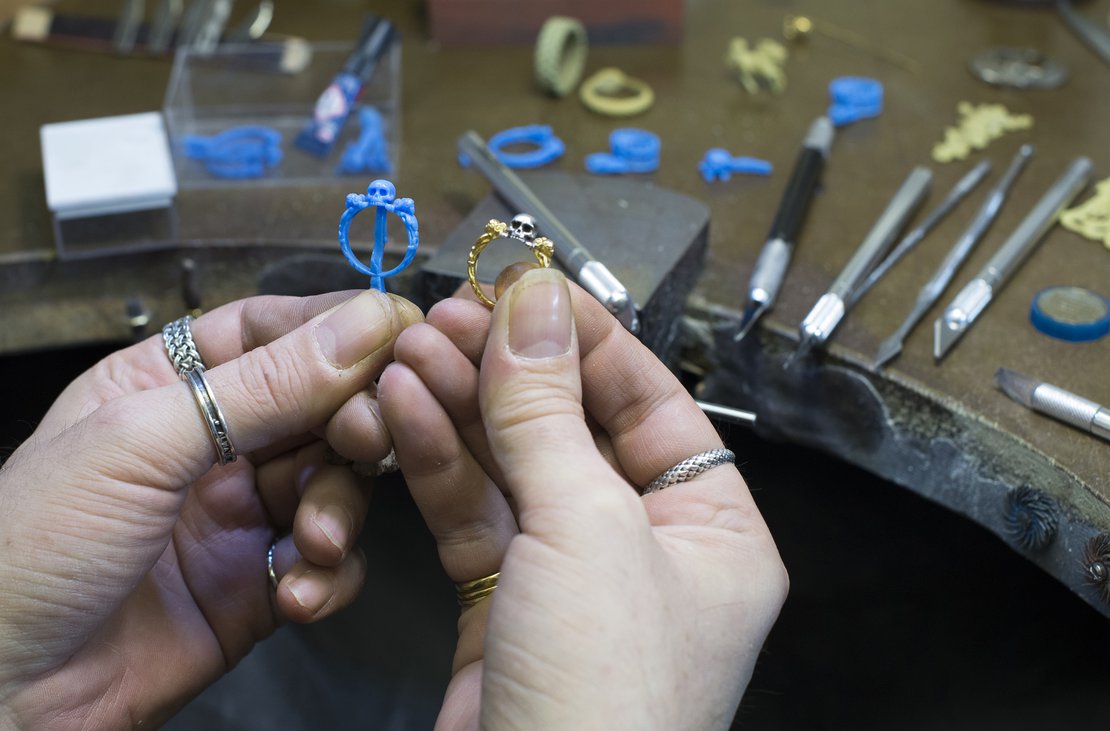Lapidary
Lapidary covers the practices of cutting and polishing precious and semi-precious stones plus knowledge of the properties of the most common gemstones used in the jewellery trade.

A lapidary is a specialist who cuts and facets gemstones with different techniques (tumbling, cabochon, faceting) in order to reveal their intrinsic beauty. As a lapidary you need a detailed understanding of the different types of gems and their properties to enable you to cut and facet them properly.
“Lapidary texts, known as lapidaries, were medieval guides to the history, properties and characteristics of gems. The belief in the inherent power of gems for various purposes was widely held, for example, that a particular jewel might protect the wearer against disease or harm.”
What personal attributes are useful for a lapidary?
To be a lapidary you need to be:
- Interested in working with precious and semi-precious gemstones
- Good at working with your hands, you will need to be steady
- Willing to learn the properties of the different types of stones
- Able to work in small scale
- Patient, methodical and precise
- Creative and artistic – with an eye for detail
- Comfortable using different types of tools including specialised machinery
- Trustworthy and reliable – you will be dealing with expensive material
- Good listening skills – especially if you are working for a company or creating bespoke pieces
- Good communication skills, especially if working directly with customers on their pieces
As a lapidary you have the vision to see the potential in a raw gem and so you study its shape, colour and density. Because stones vary in hardness and heat sensitivity some might be more prone to cracking and you will need in-depth knowledge of the stones’ properties, something you can learn through a gemmology course or qualification and through years of practical training. With a picture in mind you clean and shape the piece to bring out its unique characteristics and ultimately, you create a piece with added aesthetic value that can be used for decoration or embellishment. Like other exceptional craftsmen you spend time studying other’s work and historic examples in museums or galleries.
What will my working life be like as a lapidary?
A lapidary will work in a workshop surrounded by specialist tools. You may work for a gemstone supplier or be self-employed cutting stones on commission for jewellers or creating your own designs. If you work for a company you are part of a bigger team, earn a wage and have a fixed working schedule, normally from Monday to Friday.
If you are self-employed you may have a workshop at home or share with other craftspeople. You may engage with customers to create bespoke pieces or you might be approached by a company or an individual to create their designs. Alternatively, you might decide to design and sell your own pieces. You may sell these pieces through a gallery or retail space or directly to customers at craft fairs for example. In this case you will need to develop good business, finance, marketing and interpersonal skills.
Within your work you must be able to adhere to industry health and safety requirements especially the Personal Protective Equipment required when cutting gemstones; understand the safe storage, handling and disposal of harmful materials, substances or chemicals associated with lapidary; know how to safely operate and maintain your machines and tools and learn how to adequately process your materials; the safe storage of gemstones whilst working on them and when not handling them; safe operation and maintenance of machines and tools.
You will find it useful to maintain a working knowledge of the associated gemstone properties including colour, hardness, reflection, refraction, crystal structure, different styles of cut and their reasons for use.
As a lapidary you will use skills and techniques including cutting; grinding; polishing; lapping; drilling; faceting; carving; the dop stick method; inlaying and turning. You will need to be able to make items in accordance with drawn, verbal or written Instructions, executing to the dimensions given; and be able to apply lapidary skills and techniques to jobs using the material supplied.
You can expect to work with cutting and polishing materials and compounds; Quartz; Corundum; Beryl; Agate; Opal; Pearls; Garnet; and Tourmaline. And you will learn how to use tools including diamond grinders, sanders and saws; lapping and polishing machines; diamond carving tools; faceting machines; a pendant drill; a Vernier gauge; loupe and Dop sticks of various sizes. You should receive training in all of these as required.
A day in the life of a lapidary - Yeena Yoon
 Cutting and trimming the rough stone using a gem cutting saw
Cutting and trimming the rough stone using a gem cutting saw
 Shaping the outer shape of the stone using the lapidary grinding wheel
Shaping the outer shape of the stone using the lapidary grinding wheel
 Once the outside is shaped, drawing lines onto the stone for internal shaping
Once the outside is shaped, drawing lines onto the stone for internal shaping
 Using the Spindle to hollow inside of the stone
Using the Spindle to hollow inside of the stone
 Polishing stones using polishing compound
Polishing stones using polishing compound
Training or qualifications: How can I become a lapidary?
There are no specific qualifications to become a lapidary. Typically, lapidaries will pursue an apprenticeship because practical training is essential. Understanding the stone’s properties can also be gained by pursuing a gemmology qualification. If you want to design and create your own pieces of jewellery you might pursue a jewellery course and complement it with practical training in lapidary or a gemmology qualification.
There are several ways to start out in the jewellery, silversmithing and allied industries. To become trained as a lapidary you may choose to go straight into a job, apprenticeship or relevant course at a college, university or training centre. There are very few skill-specific qualifications available, but many courses provide an introduction to a range of creative skills. To find out more about different options and your potential route into a creative career within the goldsmithing industry click here.
What can I earn as a lapidary?
As an apprentice or someone who is training you should be paid at least the National Minimum Wage for your age and this rate should increase as you get closer to completing your training. Apprentices undertaking traditional training may start out earning around £12,000 – £13,000 per year and be closer to £17,000 – £18,000 at the end of their four-year apprenticeship. Once you have completed your training your earnings will vary depending on your skill and employment status.
Lapidary is a niche skill and there are a limited number of practising lapidary within the UK. If you are considering becoming a lapidary, you may wish to train in a complementary skill such as gemmology. This may help ensure you are more widely employable.
Salaries for an employed lapidary can start at around £22,000 - £25,000 per year in the first few years after training. This can reach £35,000 - £40,000 for the most experienced and skilled lapidary working for a top gem company.
If you are self-employed, being a lapidary can be well paid if you have regular clients or constant sources of work, but it can be difficult if you are commissioned ad hoc. As a lapidary you may work on a commission basis and agree a fee per job, per hour or per day. Rates for this will depend on your experience, the materials being used, and the complexity of the piece required by the client. No matter how you work your reputation is extremely important as the goldsmithing industry often operates on word of mouth recommendations and trust.
What industry membership bodies can I join?
The Goldsmiths’ Centre offer a range of membership options for people at different stages of their career. Joining a membership body or keeping up to date with industry events allows you to create a network with like-minded individuals. They might also run workshops to acquire new skills. See for example:
Examples of lapidary
The Goldsmiths’ Company Collection includes over 8,000 pieces of antique, domestic & contemporary silver, jewellery and art medals which were made in Britain between 1350 and the present day. The Company continues to purchase, and commission pieces each year and new contemporary pieces must demonstrate innovative design combined with excellent craftsmanship. Pieces are acquired from both established craftspeople and rising stars.
 Charlotte de Syllas, Flight’ Necklace, 2015 © Collection - The Worshipful Company of Goldsmiths
Charlotte de Syllas, Flight’ Necklace, 2015 © Collection - The Worshipful Company of Goldsmiths
 Charlotte de Syllas, Jade Bracelet, 1999 © Collection: The Worshipful Company of Goldsmiths
Charlotte de Syllas, Jade Bracelet, 1999 © Collection: The Worshipful Company of Goldsmiths
 Cameo Brooch, c.1860 © Collection: The Worshipful Company of Goldsmiths
Cameo Brooch, c.1860 © Collection: The Worshipful Company of Goldsmiths
 Etruscan Scarab Bracelet, c.1650 © Collection:The Worshipful Company of Goldsmiths
Etruscan Scarab Bracelet, c.1650 © Collection:The Worshipful Company of Goldsmiths
Further Information
There are many reputable sources of information relating to the jewellery, silversmithing and allied industries. Whether you are trying to find information on technical skills, processes, materials, makers or inspiration some resources relating to lapidary can be found below:
The Goldsmiths’ Company Library relates specifically to gold and silversmithing, jewellery, assaying and hallmarking, precious metals, and the City of London and its guilds. The Library includes 8,000+ books and 15,000+ images, magazines, periodicals and journals, technical guides, films, special research collections, design drawings produced during the early and mid-twentieth century by British or UK-based craftspeople and subject files on a wide range of industry related topics. The Library is also responsible for the Company’s archives, which date back to the 14th century.
Lapidary related books and archival materials include:
- J.H. Howard, Revised Lapidary Handbook, Greenville SC, J. Harry Howard, 1946
- Herbert Scarfe, Cutting and setting stones, London, B.T. Batsford, 1972
- John Sinkankas, Gem Cutting: a lapidary’s manual, London, D. Van Nostrand Company Inc., 1962
- Herbert Tillander, Diamond cuts in historic jewellery, London, Art Books International, 1995
- Haidrun Wietler, Munsteiner, Barcelona, Publicaciones Joyeras, S.A., 2000
- The Second Book of Ordinances, 1513












